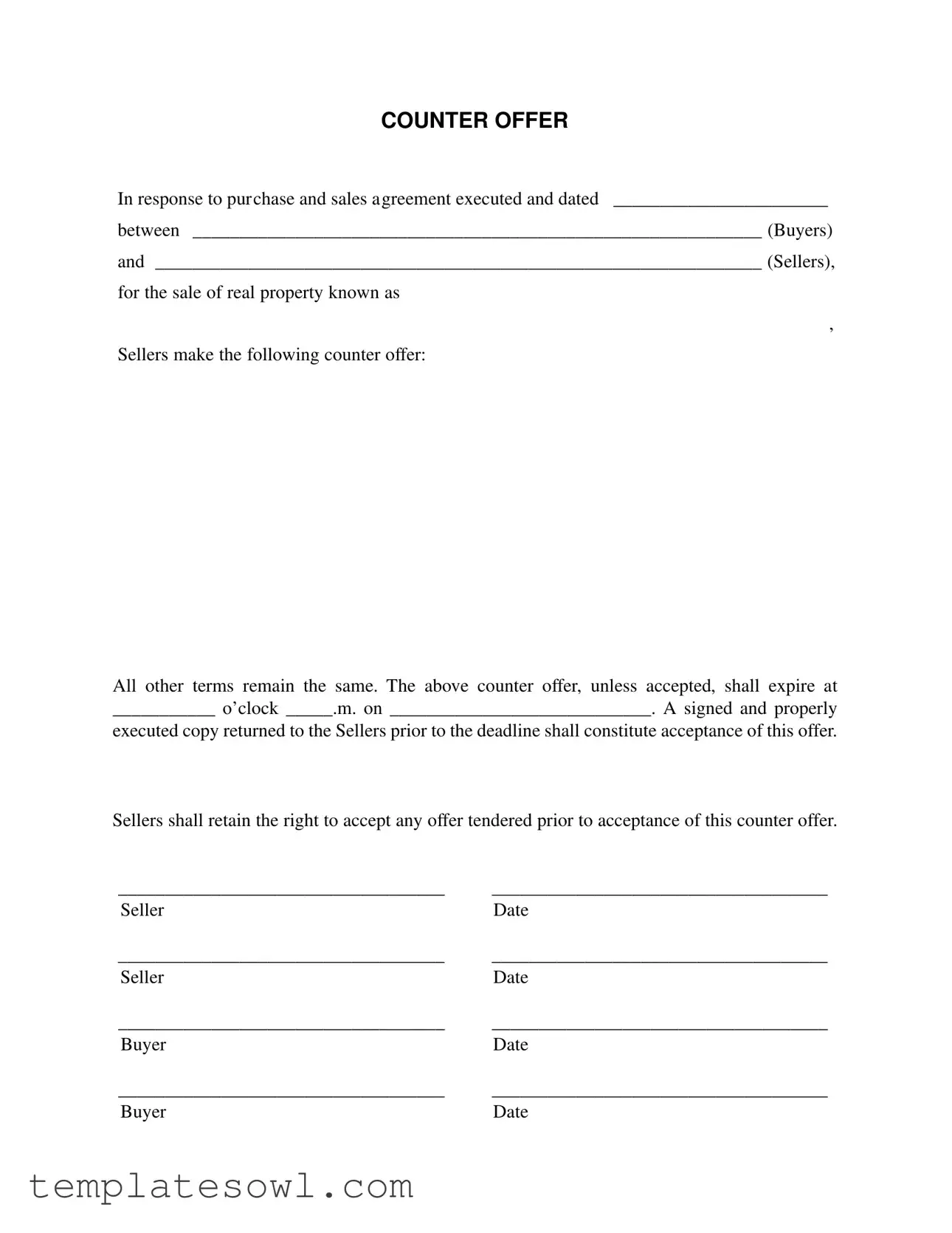COUNTER OFFER
In response to purchase and sales agreement executed and dated _______________________
between _____________________________________________________________ (Buyers)
and _________________________________________________________________ (Sellers),
for the sale of real property known as
,
Sellers make the following counter offer:
All other terms remain the same. The above counter offer, unless accepted, shall expire at
___________ o’clock _____.m. on ____________________________. A signed and properly
executed copy returned to the Sellers prior to the deadline shall constitute acceptance of this offer.
Sellers shall retain the right to accept any offer tendered prior to acceptance of this counter offer.
___________________________________ |
____________________________________ |
Seller |
Date |
___________________________________ |
____________________________________ |
Seller |
Date |
___________________________________ |
____________________________________ |
Buyer |
Date |
___________________________________ |
____________________________________ |
Buyer |
Date |
